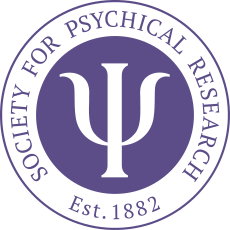The Magazine of the Society for Psychical Research 15 (2024)
This issue marks our first President's Pages from our new President, Professor Caroline Watt. Caroline introduces herself in her pages, so all I will do is welcome her to The Magazine and to wish her well in her new role.
Our main article this issue is from Dr Efram Sera-Shriar a University of Copenhagen based historian and writer. His particular interests are in the history and contemporary study of the occult and its intersection with science. For us he looks at a case involving Harry Price, technology and publicity.
Next up our resident reviewer and SPR conference and workshop IT guru, Ashley Knibb. Ashley attended the Mind the Gap workshop and came away with some new ideas and he was fully inspired by the day event held recently at Vernon Mews.
A letter from Mick O'Neill points out some séance activity associated with one of the works of Agatha Christie.
Dr Graham Kidd of the Spontaneous Cases Committee gives us some reminiscences of the late Peter Fenwick. It's illustrated by a beautiful picture, courtesy of our immediate Past President, Adrian Parker.
Then in the News section Dr David Vernon keeps us abreast of some recent developments with regard to the Journal of the Society for Psychical Research. Aaron J Lomas of the University of Northampton makes a request for any anomalous experiences during the Covid-19 lockdown. He gave an excellent presentation on this at the most recent SPR conference and he is wanting to gather more data. He's also promised to give a progress report for a future issue of The Magazine. And finally in the News section there is a notification of a funding opportunity from the John Björkhem Memorial Foundation.
I would like to remind people that as well as The Journal and The Magazine there are many, more immediate ways to interact with the SPR. Our Secretary Peter Johnson sends out event reminders by email but there are also feeds for X (formerly Twitter), Facebook and Bluesky. On the feeds there are many posts of interest to members relating to other organisations as well as the SPR. But also there are requests from members for help, whether it be tracking down information or asking for people to be involved in research, and if we can't help each other then the world is a poorer place indeed. As well as requests there are offers. Some people contact the SPR saying they have (for example) surplus publications of interest to members and they offer them through the social media outlets. The more we use them the more useful they become.
As usual if you have an article you would like to propose or something to say then please contact The Magazine through the usual address [email protected] or through the SPR offices. ψ
Gordon Rutter
Editor

